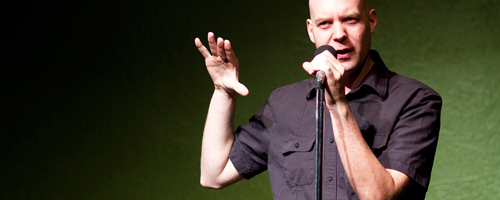A picture is worth a thousand corpses
The worst part of this unusually warm spring weather is the yardwork; it just tuckers me the heck out. I had just finished uppruning my hedges, you know, to keep the neighborhood kids fromlooking at my house, and all I could think about was settling inwith a nice spritzer and some light reading.
But just as I leaned back and cracked open one of my favorites,neo-conservative classic “The Birth of Freedom: Vision for America”by Steve Forbes, when my wife started hysterically bawling for meto help her out.
At first I figured she’d caught our daughter listening to NPRagain, but when I came into the room I realized this was much, muchworse. On the computer monitor in front of her were some of themost horrific images I had ever seen; rows and rows of casketsreturning from Iraq, each draped with a flag, each containing thebody of a young U.S. soldier.
The publishing of these photos, some released by the Air Force,and some taken by (now) ex-cargo worker Tami Silicio, have stirredup amazing amount of controversy. Pentagon officials are up inarms, President Bush is shocked and dismayed, and thousands oflonely souls, who only find comfort in posting their everypedestrian thought on the Internet, are horrified. If anyone hadany doubt that actual, real U.S. citizens were dying in Iraq, nowthey’re certain.
Throughout the Iraqi invasion we’ve seen graphic photo aftergraphic photo of Iraqi soldiers fallen in combat, and when thedisfigured and humiliated bodies of Saddam Hussein’s sons, Uday andQusay, were published all over U.S. media, practically no oneraised a peep. But when the issue concerns U.S. casualties,suddenly all sort of moral protests began to surface.
The Pentagon insists that the publication of photographs of theremains of U.S. soldiers, even as anonymous caskets, is againstpolicies introduced in 1991 to protect the families of U.S.soldiers. “Quite frankly, we don’t want the remains of our servicemembers who have made the ultimate sacrifice to be the subject ofany kind of attention that is unwarranted or undignified,” JohnMolino, a deputy undersecretary of defense, was quoted on CNN.
While I can appreciate the sentiment and sympathize withsoldiers’ families, I just can’t shake the feeling that thePentagon has another agenda (or two or three or four).
Take for instance photo after photo of square- jawed actionfigure Pat Tillman, football star turned soldier who died inAfghanistan recently. We are reminded of every detail of his life,from his years with the Arizona Cardinals to his time as a memberof the Army’s elite special forces, but to see his casket wouldremind us of his death – something the Pentagon would really ratheravoid. After all, we’re doing our best not to repeat all the publicrelations snafus of Vietnam.
Democratic representative Jim McDermott of Washington, whoserved in the Navy in Vietnam, made the association last week onCNN: “As people began to see the reality of it and see the 55,000people who were killed coming back in body bags, they became moreand more upset by the war. This is not about privacy. This is abouttrying to keep the country from facing the reality of war.”
And that reality is a graphic one. It is one thing to hear aboutfour U.S. contractors killed and mutilated in Fallujah, or Iraqidetainees abused and humiliated by U.S. soldiers at Abu Ghraibprison, but seeing these atrocities on film is exponentially moregruesome and hard to forget. But I don’t want to forget. I want tobe haunted day in and day out by the pictures I see from Iraq. WhenI’m ordering a Sourdough Jack, or renting “The Truth about Cats andDogs” or just wandering the Clackamas Town Center, I want to bereminded that people are dying at that moment, in a war I don’tagree with.
And I want you to be haunted too. These are terrible images andthis is a terrible war. I wish those blindly supporting thisadministration’s crooked agenda, yet so offended by having to seethese painful images, would stop for one second and think aboutwhat they actually represent.



